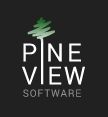208 reads
The Way to Building Integrated Data Platforms with IoT Edge Devices and AI Algorithms "At the Edge"
by
February 14th, 2021

Independent software engineering consultancy based in Norway. We maintain Nightwatch.js, among other stuff.
About Author
Independent software engineering consultancy based in Norway. We maintain Nightwatch.js, among other stuff.